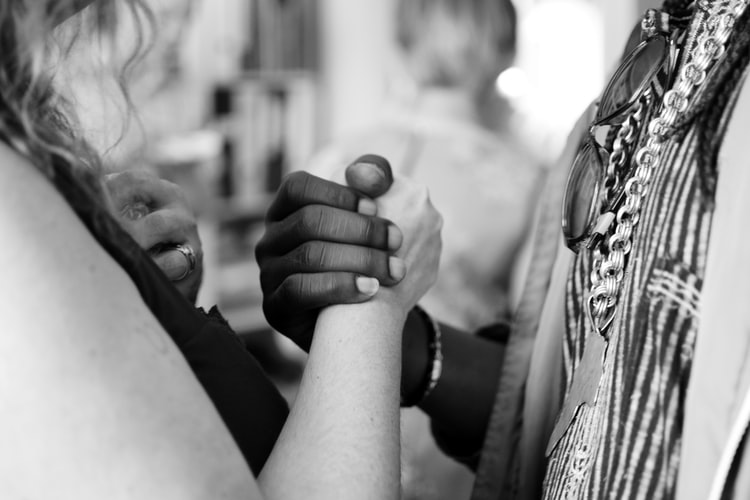By Taruka Srivastava -
Workplace diversity and inclusion have without doubt become
the most important aspects of modern day recruitment. It is quintessential to provide all candidates
with equal opportunities and therefore, more and more sports organisation are
now hiring a ‘Diversity and Inclusion’
officer.
We asked Marcus Ryder MBA , Head of External Consultancies
Sir Lenny Henry Centre for Media Diversity at Birmingham City University
whether he think the sports industry is finally taking 'inclusion' and
'diversity' more seriously as they have started hiring in these categories.
He explains, “We have to be careful not to confuse process
with progress. We have seen many industries make large policy announcements in
recent years around diversity and inclusion but with limited progress. This
problem is beautifully summed up in the book Diversity, Inc.: The Failed
Promise of a Billion-Dollar Business by Pamela Newkirk
One example she gives is that between 2014 and 2016, Google
spent $265 million dollars on some of the most common tactics for diversifying
the workforce but their percentage of black employees remains stubbornly at 2%.
That does not mean we should not applaud the new diversity efforts in the
sports industry but let's not get too excited, yet.”
As to what more can they do to ensure inclusion and diversity
within their organisations, Marcus says: “Ultimately any industry is about
money and money is where the power lies. This means we need to focus on the
money when it comes to diversity, and not just head count, which is a problem
for a lot of diversity policies. We need to look at percentage of salary spend
off the field of play, we need to look at which sports are getting funding and
where, and which communities they may disproportionately represent, and we look
at age demographics - we need to build long term careers for people in sports,
too often some people's careers are very short while others last up until
retirement.”
The biggest obstacle Marcus thinks is “the idea that you can
keep the same existing structure and just add a few more ethnic minority faces,
or women, or name the underrepresented group.”
He elaborates: “Discrimination
is structural and we need to change the structures of the industry, which
initiatives get funding, how funding is allocated, which sports are funded.
Structural change, of any kind, is never easy. Convincing people there needs to
be a structural change, as opposed to a cosmetic one, is the most difficult
task and then implementing those structural changes takes time and effort. “
Racism, discrimination and inequality in sport continues to
be a huge issue despite sport being a powerful vehicle to transform societal
issues. Players are being encouraged to use their platform to campaign for
change but it is not the role of athletes to fix this problem.
Companies need to go beyond looking at D&I as individual
facets and consider all of the visible and invisible differences of their
employees, customers and wider society, which can only be achieved by having a
diversity representative in your leadership team dedicated to the cause.
Leila McKenzie-Delis, Founder & CEO of DIAL Global (Diverse Inclusive Aspirational Leaders)
thinks that hiring a Chief Diversity Officer is the best way to ensure a
company’s diversity agenda is lead at the very top and that the CEO has active
involvement in the goals, actions and budgets for a successful
transformation.
She continues: “A CDO guarantees that strategic goals,
company policies, and laws surrounding DEI are indeed being followed and
carried out. Employees, customers, investors, and suppliers are all demanding
that companies get serious about DEI – and adding a Chief Diversity Officers to
your leadership team is a critical step to success.”
At iWorkinSport , we support a new international group of
leading sports business professionals called Diversity in the Business ofSport (DiBS, for short), which was created with one simple aim: To increase
diversity amongst professionals working in the sports business industry.
We asked DiBS founder Alex Norman if he thinks the sports
industry is finally taking 'inclusion' and 'diversity' more seriously, he
says: “It is great to see sports businesses taking concrete steps on
diversity and inclusion, whether it is through more businesses appointing
Diversity and Inclusion executives (or similar), or through putting in place
other schemes and processes within their businesses. That said, it's important
to remember that hiring people into D&I roles is only one part of the
equation.
“Diversity and inclusion has to permeate every area of the
business to be truly meaningful and the people in those roles have to be given
real power to effect change. We're fortunate to be living through a period when
diversity and inclusion is firmly on the agenda, but the real challenge for all
businesses (in sport and outside it) is to translate goodwill and good
intentions into firm, tangible actions that make long-lasting differences,” he
emphasizes.
The problem remains though that, in many areas, sports
business still happens not to be very diverse. The real challenge is, therefore,
perhaps more to do with inertia.
Norman adds: “In saying this I mean that being well
intentioned and open to diversity and inclusion in the workplace isn't the same
as actively putting in place measures to promote it. In my opinion, that is the
biggest challenge for most sports businesses; putting in place
concrete structures to put all that goodwill into practice to make a
lasting long-term difference.”
Fortunately, we are observing sports organisations
being vocal against discrimination and for inclusion. By working together
towards diversity and inclusion, the sports industry can cultivate real change.


